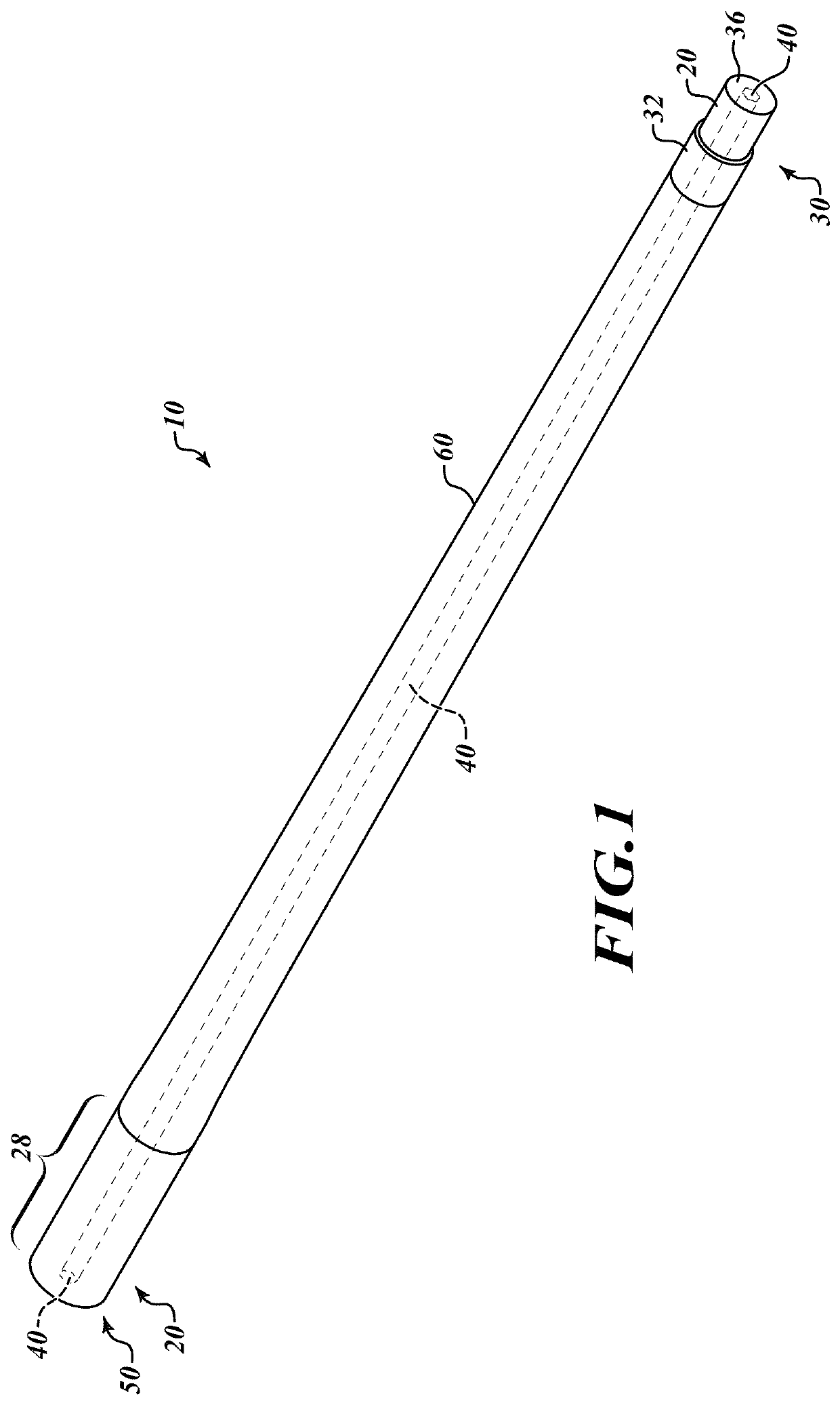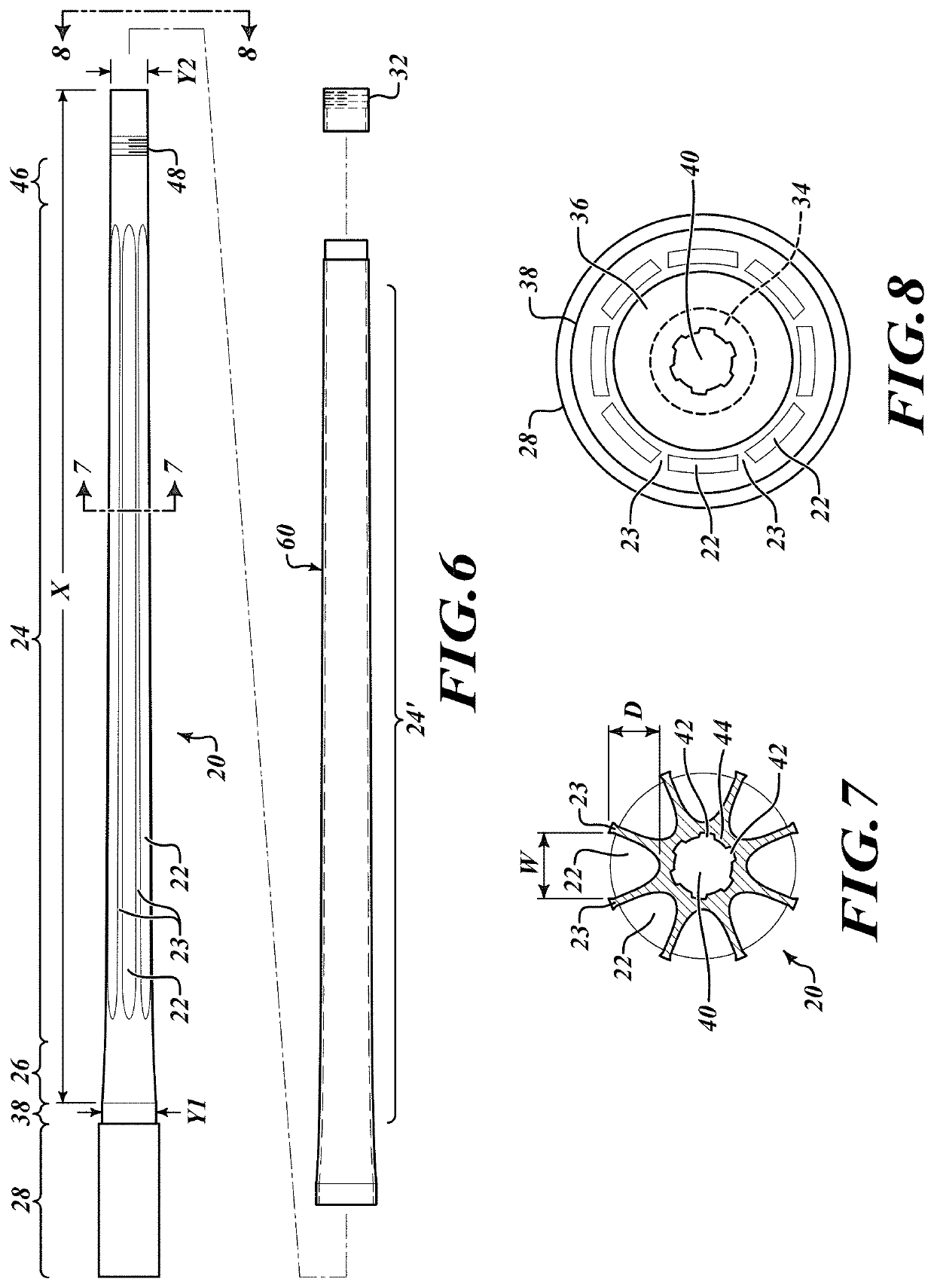Carbon fiber barrel sleeve resiliently bonded to steel liner and method of construction
a carbon fiber and steel liner technology, applied in the direction of barrels, weapon components, weapons, etc., can solve the problems of compromising the rigidity of the barrel, affecting the strength and stiffness of the carbon fiber, and the conventional method and construction paradigm suffering internal stresses, etc., to achieve the effect of retaining much rigidity, less upon the strength and stiffness of the carbon fiber, and reducing the stress within the molecular structur
- Summary
- Abstract
- Description
- Claims
- Application Information
AI Technical Summary
Benefits of technology
Problems solved by technology
Method used
Image
Examples
Embodiment Construction
[0033]By way of overview, embodiments of the inventive method and rifle barrel are formed by a method with very tight control over the variables necessary to properly form the carbon fiber sheath that envelopes the barrel liner:[0034]1. Composite materials are wrapped around a tapered mandrel at a thickness prescribed for the specific contour / design. (There are numerous individual mandrel designs for different contours / configurations.) The dimensional relationship between the mandrel and the liner are such that the resulting composite “tube” is formed to achieve full contact with the steel barrel liner;[0035]2. The composites and resin material are cured to achieve the highest possible longitudinal stiffness, restricting hoops, and uniformity along the length of the formed sheath. Materials are selected to allow high temperature use;[0036]3. A structural steel liner is made to match the contour of the mandrel. The liner is “fluted” and material is removed by aggressive fluting while...
PUM
| Property | Measurement | Unit |
|---|---|---|
| elongation at break | aaaaa | aaaaa |
| temperature | aaaaa | aaaaa |
| temperature | aaaaa | aaaaa |
Abstract
Description
Claims
Application Information
 Login to View More
Login to View More - R&D
- Intellectual Property
- Life Sciences
- Materials
- Tech Scout
- Unparalleled Data Quality
- Higher Quality Content
- 60% Fewer Hallucinations
Browse by: Latest US Patents, China's latest patents, Technical Efficacy Thesaurus, Application Domain, Technology Topic, Popular Technical Reports.
© 2025 PatSnap. All rights reserved.Legal|Privacy policy|Modern Slavery Act Transparency Statement|Sitemap|About US| Contact US: help@patsnap.com



